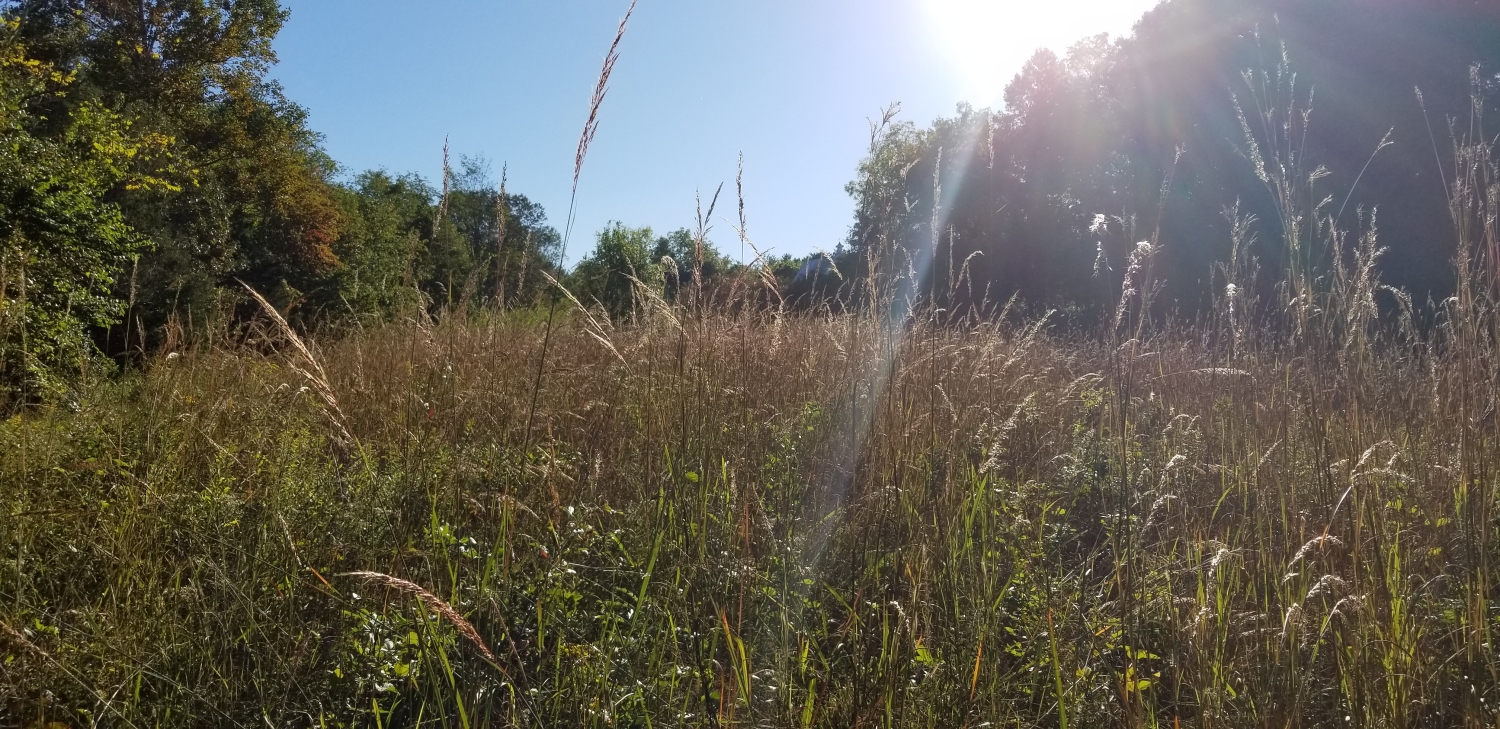Red Trail

Rochelle Garwood
The field ahead was restored to native grasses in 2001.
Grasslands: Explore the Food Chain
A native grassland such as this one provides a habitat rich in food and shelter.
Insects are vital to the grassland ecosystem. Watch for flies, bees, and butterflies feeding on the wildflowers, facilitating pollination. The ubiquitous grasshopper will eat the developing shoots of grasses. Grasshoppers are prey for many other animals including mantids, spiders, birds, reptiles and mammals. The deer mouse and meadow vole also feed on roots, green shoots, seeds and some insects. They would do a tremendous amount of damage if not for the predators who visit the field for a rodent meal. Striped skunks are omnivorous and may eat mice, insects, berries or carrion in a single night. Red fox and coyote are invaluable to field health as they prey on rabbits, rodents and insects which dine on the grasses.
Reptiles, such as the black rat snake and black racer, are another important predator of rodents in a field. The eastern garter snake visits the field in search of insects and amphibians. The snakes, in turn, are food for the Red-tailed Hawk and Great Horned Owl, top predators on the food chain and frequent visitors to fields.
Many animals depend on the field for homes as well. Groundhogs love the grasslands for both food and to dig the complex burrows they live in. These burrows provide homes for many other animals as well.
For some birds, the field provides nesting sites while others feed in the field and nest in the nearby hedgerow and edge habitat.
Parts of this field are selectively mowed each year to retard successional growth of woody plants and encourage patches of blackberry and sumac, both of which provide food to many species of wildlife.